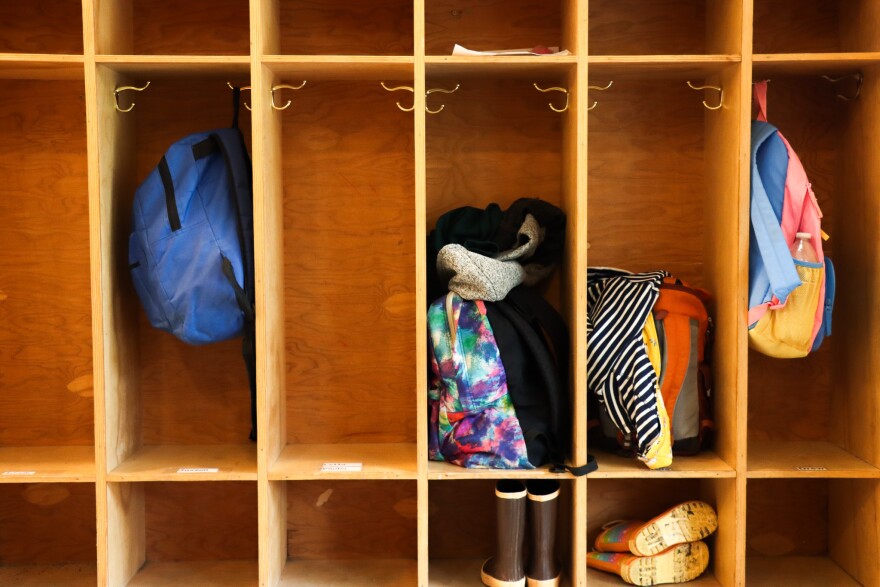Haines is Alaska’s oldest borough. A recent survey of residents under 40 years old provides a clearer picture of why.
Haines Borough Mayor Tom Morphet sent out the survey this winter to gauge how young people are faring and what they need to succeed. After reviewing nearly 90 responses, he said they underscore problems that could have major implications for the town’s long-term well-being.
Respondents outlined a long list of factors that make it increasingly difficult for younger people to live in the small Southeast community, ranging from scant housing and child care options to polarized local politics.
“The lack of progress on these issues — daycare, child care, housing — are starting to breed resentment among our younger population,” Morphet said. “I think it’s something the government should be aware of.”
State data indicates that Haines’ population has dropped between 1% and 2% on average each year between 2021 and 2024. At the same time, Haines has the highest median age — 49.8 years old — of any borough in Alaska.
Morphet paid for the survey via the mayor’s discretionary fund. The Chilkoot Indian Association and Haines Chamber of Commerce sponsored the effort. For now, there aren’t plans to use the survey aside from capturing sentiment among younger residents, a demographic Morphet said is “not always present or prominent at our government meetings.”
“What gives some weight to the responses, in my opinion, was that the respondents were in Haines in February,” he added in a June email to members of the Haines Borough Assembly. “These are folks who want a stake in our town.”
Housing and child care shortages send young people Outside
Dacotah Russell is 33 and has two young kids. She said in an interview that Haines’ limited child care options are the number one challenge that her family — and nearly all other young families — contend with.
She said the shortage became even more dire last year, when one of Haines’ few preschool options, a nonprofit, shut down. It’s set to reopen this fall, but the closure underscored the dearth of options, particularly as her toddler approaches preschool age.
“If the preschool wasn't going to open, I'm not sure what we would do. I probably would have to quit my job,” said Russell, who works as an accountant for the borough. Her husband, Travis Russell, is a local police officer.
She was among those who said the child care shortage — combined with a lack of well-paid, full-time jobs — has left most families no choice but to operate on one income.
“A lot of people are moving out because they can't afford to live off one income here and still raise children,” she said.
The survey suggests that housing is another top issue for younger residents. By Morphet's count, nearly half of the respondents mentioned housing and rent.
Joe Aultman-Moore was among them. He came to Haines in 2014 as an outdoor tour guide but settled here full-time in 2017. He’s 35, and he says he and his friends have consistently struggled with housing whether they’ve hoped to rent, build or buy.
“I have been in the situation of being like, days away from basically living, you know, in a tent surrounded by boxes of my stuff because I could not find anything at all,” Aultman-Moore said during an interview this week at the local library, where he works.
The Haines Borough Assembly recently considered addressing the issue by allowing homeowners to build small apartments on their properties that could be used as rentals. The proposal generated pushback from some homeowners concerned about overdevelopment.
The assembly ultimately tabled the proposal, the Chilkat Valley News reported early this month.
Aultman-Moore says that’s just one example of a relatively straightforward policy change that would seriously benefit young folks and the borough writ large.
“We need to have more diverse ages around here in order to really have a healthy workforce and a healthy community,” he said. “And we are moving in the opposite direction right now, and that's going to hurt us economically and socially.”
Respondent and resident Sarah Elliott spoke to the value of government funding for community services and assets that benefit families — things like the local pool, nonprofits and school. She was born in Haines in the 1980’s, is 40 now, and has two teenage kids.
She said all of the above are crucial for families’ well-being but often get caught up in annual budget talks and political crosshairs.
“I just think that if you want young families to stay in town, then you need to support the things that young families want,” Elliott said.
Morphet, the mayor, said many respondents also raised concerns over a lack of inclusivity, including toward the LGBTQ community, and voiced desire for a more functional local government.
“The drivers of the community, the people that take chances, the people that build the community, are younger, and we need them,” he said. “We absolutely need them, and we can’t afford to be losing good ones.”


